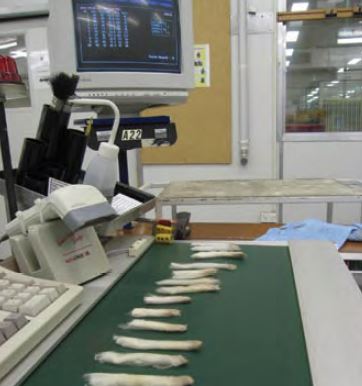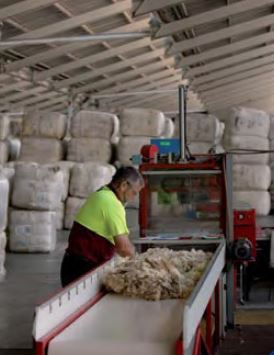
Staple Length & Strength
One of the most important characteristics for determining the value of greasy wool is the average fibre length that will be achieved when the wool has been processed or combed into wool top. This length is known as the Hauteur (fibre length in the Wool Top). In addition, the average strength of staples is important in assessing how well the wool will perform during processing. Research has shown that Hauteur is closely correlated with the average Staple Length and Staple Strength of the greasy wool measured prior to processing.
|
|
Unlike core testing for yield and fibre diameter where bales are sampled using a core tube to cut through the wool in the bale, staple Length & Strength is measured from full length wool staples. The initial sampling process takes place in brokers stores and requires:
|
Once the above preparation is complete, the staples of greasy wool are measured on an instrument called the Automatic Tester of Length and Strength (ATLAS). This instrument measures:
- Mean Staple Length of the Staples
- Coefficient of Variation of Staple Length
- Mean Staple Strength
- % Distribution of Position of Break (Tip, Middle, Base)
|
Trials Evaluating Additional Measurements (TEAM) have established that staple Length & Strength data combined with other objective measurements are integral to forecasting processing performance. The TEAM-3 formula was developed from over 20 years of industry trials and this research shows that processing performance is closely related to this predictive formula. Hence wools that are not tested for staple Length and Strength may be discounted in the market place because Wool Buyers are more uncertain how they will process. To assist wool growers and wool brokers to understand the commercial importance of Staple Measurements AWTA has commissioned reports to establish the premiums and discounts applied to measured and unmeasured wool in the market. These show that there are significant commercial advantages to testing sale lots for staple length & strength. |
 |
Find out more:
Fact Sheet - Staple Length & Strength![]()
TEAM-1, TEAM-2 & TEAM-3 Final Reports![]()



